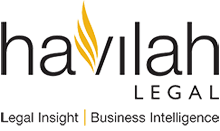We seem to be constantly hearing stories about national and international sporting bodies under fire after allegations of cheating or corruption.
This week’s revelations by the World Anti-Doping Association (WADA) regarding drug tests and alleged bribery allegations associated with “hiding” positive drug tests from adjudicators, has left both Russian athletics and the International Athletics bodies with their reputations in question.
As we reflect on the lessons learned from the failures of both Russia and, potentially, any governing body, I am reminded once more that true accountability within any organisation boils down to one simple question.
Are there internal systems and processes to monitor and measure what each member of any organisation does, so that any “abuse” of the delegated authority given by the board to the executive arm of the organisation, or to volunteers, from the very top to the bottom, can be detected and acted upon.
It is that simple when it comes to measure a great organisation. Governance means properly establishing internal Systems, Accountabilities and Processes.
A transparent framework will protect your organisation’s brand and potentially, the risk of you facing a costly and time-consuming insurance claim. As you can see from the events reported this week, you also risk a severe loss of reputation, which could be avoided by improving what you do internally to meet “best practice” compliance with risk mitigation.
A good place to start is to understand the legal duty that your board or committee has to meet your fiduciary responsibilities. The authority which sets out those broad duties is the Case of R v. Williams (2005) 216 ALR 113 (the One-tel case) which specifies the following obligations.
As a director or committee member, you must:
- Be familiar with the fundamentals of your organisation;
- Keep informed about the organisations activities;
- Monitor the organisation’s affairs;
- Maintain familiarity with the financial status; and
- Be reasonably informed of the organisation’s financial capacity and develop an opinion in relation to that. (particularly solvency)
Monitoring Performance
It is how you meet the obligation to monitor the affairs of your organisation which really sets the agenda for an internal governance framework.
A Board member cannot sit in the office across the desk of your CEO all day in order to get the “full picture” of what is happening. As a CEO or Executive Director, it might horrify you to think that your chairman or newly appointed committee member is interfering with your day to day operations. They should never need to have this involvement if the functions of Board and Executive are very clearly defined.
The way you should go about monitoring the operations is to insist that there are proper processes in place throughout your entire organisation. Part of establishing a sound organisational process is to clearly determine where the responsibilities lie (from the CEO down) and to clearly document who has the authority to make certain decisions.
I think establishing organisational processes and mapping out the responsibilities can truly make a competitive difference to any organisation. My view is based on the changes I have made within my own organisation in the last 12 to 18 months.
Here’s how you do it!
Documenting the Processes
Every organisations performs various functions or activities e.g. marketing or finance. The organisational chart should reflect each of those various functional “departments”. Don’t worry that one person may be employed to do several functions because your organisation is very small! One person can wear more than one hat.
Each functional area has their own core process/es to perform.
Each core process in one of those key functional areas will naturally overlap with other functional areas. (like a swimming pool with swim lanes side by side and people constantly changing lanes)
To be effective an organisation needs to be clear on how that overlap occurs.
To start compiling your organisational chart, specifically ask yourself in relation to each key functional area;
- Who is accountable for the overall activity? Eg. Financial Controller responsible for preparing accounts
- Who is responsible for each task? Eg. Accounts clerk responsible for posting the general ledger
- Who needs to be informed? Eg. CEO sign off accounts monthly and board every two months.
Only then are each of the individuals in the organisation clearly empowered. Uncertainty is eliminated.
The mapping process is sometimes said to have 4 perspectives or “voices”:
- The voice of the process; which means what is actually required to be done;
- The voice of the employee; who has to execute the work function;
- The voice of the customer, partner or stakeholder; who clearly wants the organisation to do the best job; and
- The voice of the business; which is responsible for everything.
The outcome of the mapping process and the clarity it provides means that if anyone in the organisation is temporarily missing, then the process simply runs itself. It creates independence from individuals and it genuinely releases people in the process with confidence and clarity so the entire hierarchy benefits.
For any organisation (including the IAAF), both establishing and reviewing its internal processes so that there are clear accountabilities and an effective reporting structure is the real key to “best practice”.
In his interview this morning on the morning news program I was watching, Sebastian Coe (as President) promised that the IAAF would take a serious look at itself including its internal processes in order to establish why it was possible for some of its members to behave in the allegedly corrupt manner that has been reported in the media and to the authorities
What else can he usefully say at this point? What a shame that the IAAF did not previously have a culture of genuine and transparent focus upon its internal organisational effectiveness before the reputational damage was done!
Where Can You Start?
- Name all the core processes of your organisation;
- Prioritise and focus on which process to work with first and go ahead and start with that first priority;
- Template how to undertake the Process e.g. “what each person is responsible for” by answering these specific questions:
- What is the process called? Any Activity is a Verb and a Noun eg Validate Identity/ Engage Sponsor / Prepare budget / Lodge return / Induct Employee /
- Who is the steward of the process? (Overall who takes care of it)
- Who is the champion? (charged up and driving it)
- How would you describe it to someone who didn’t know about it? (in a nutshell)
- What is the trigger that initiates the process?
- What is the measure or metric about the effectiveness or efficiency outcome?
- Who are the beneficiaries of the process? (customers/stakeholders)
- What value or benefit do those beneficiaries receive from the process?
The process is not about sacred cows; every single activity in the organisation should be questioned. Most processes have around 60% of waste that can be eliminated. There is a great opportunity to build in whatever steps can be taken to eliminate possible bottle necks in the future.
As a rule, everyone in your organisation is already smart enough to appreciate the power of doing this. The problem is usually that people simply do their (sometimes ineffective) best without knowing the whole game plan.
Why ineffective? If you’re not sure of what to do or who should be doing it, then don’t you just innovate and cope!
The outcome is quality, efficiency, accuracy and results. Here are some benefits I have found:
- Streamlines internal processes and flow
- Avoids gaps and duplications
- Makes work tangible
- Communicates process knowledge (how do we do it?)
- It’s a prelude to innovation improvement as in the “what if we tried things this way”
- Clarifies responsibility
“You don’t have to be sick to get better” by Michael Josephson
Relevance to Governance
Your compliance obligations will inevitably become stricter over time! The Australian Charities and Not-for-Profits Commission (ACNC) has already introduced annual reporting requirements (depending on the size of the charity) and one of the reporting obligations is to explain to the Executive or management reporting regime to the Board of Directors.
If you hope to attract funding from either government or the corporate sector, you will have a much greater chance if your internal governance is established, documented and used.
Typical Measures of Accountability and the Benefits
Let’s assume that a positive drug test is detected by an independent governing body (not WADA) for a sport: – let’s call it the International Hurling Body – which revealed that an athlete was strongly suspected of using a banned substance.
Question: What are the KPI’s in that organisation right now for assessing the risk for a positive test result failing to be reported to the proper people in the organisation, who could then act on that positive drug test?
A risk analysis should reveal that one risk is that the drug test result could be suppressed at some level; maybe in exchange for a bribe or a benefit? Given the establishment of clear internal processes and authorities, how could that risk of corrupt conduct be mitigated?
When Sebastian Coe ( President of the IAAF) was interviewed about this athletics scandal, he expressed his desire to make changes and wage war against drugs in athletics, but as the journalist quite rightly pointed out, Sebastian Coe has spent the last 8 years as Deputy President of the IAAF. Has he not effectively been asleep at the wheel for that whole time?
If you are determined to follow best practice, then my advice is; “don’t wait – get started!!”
Bruce Havilah

